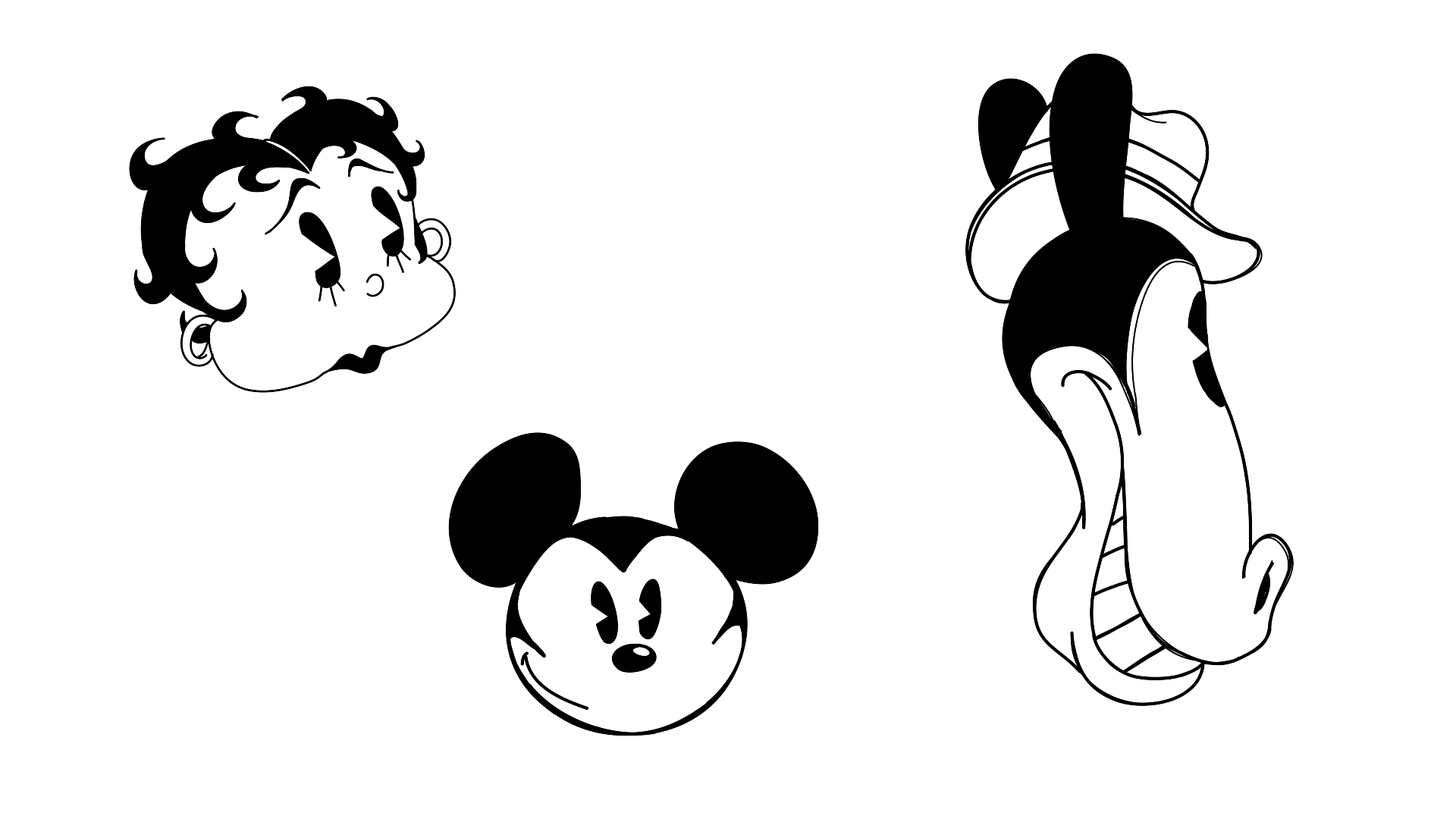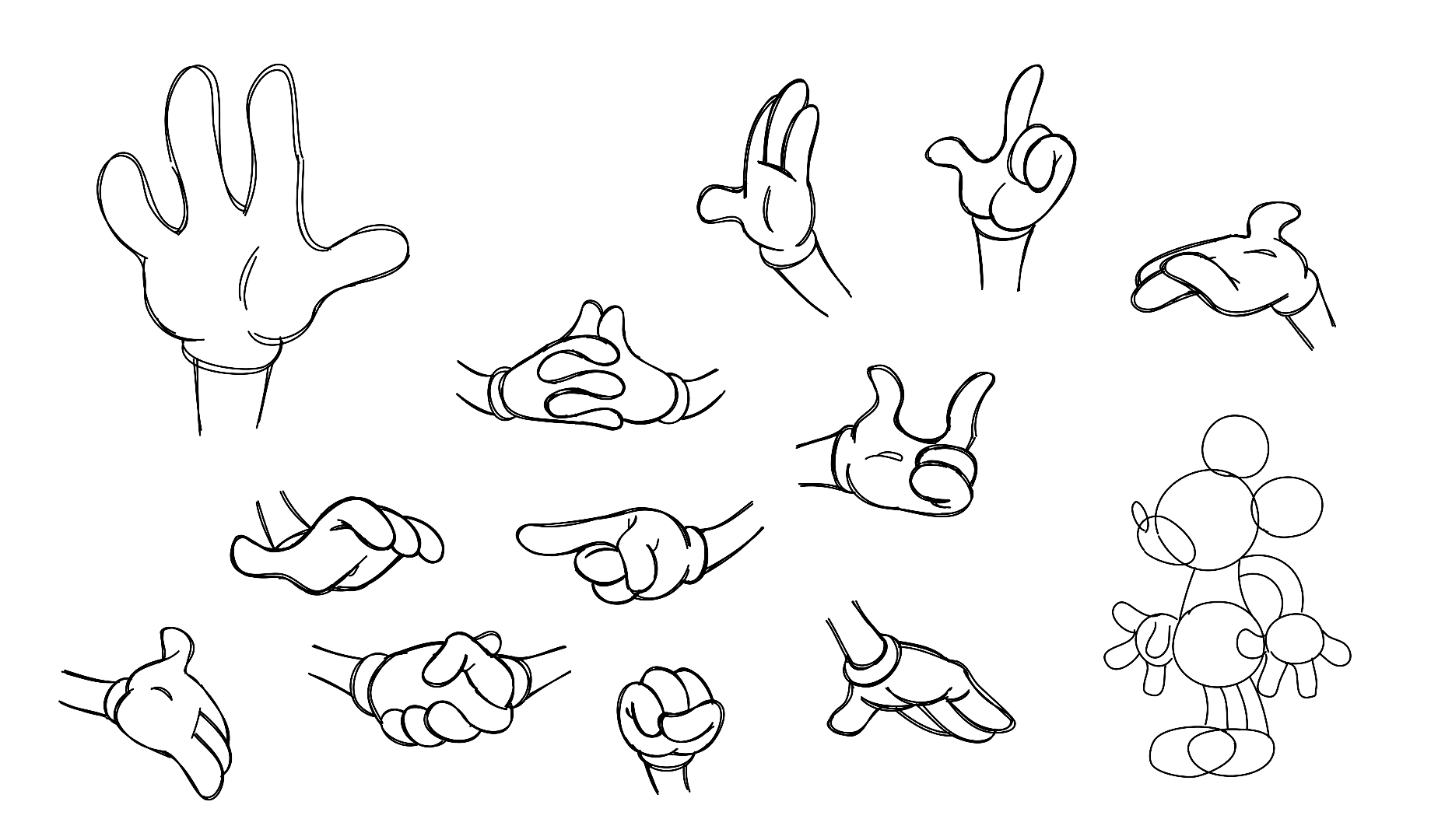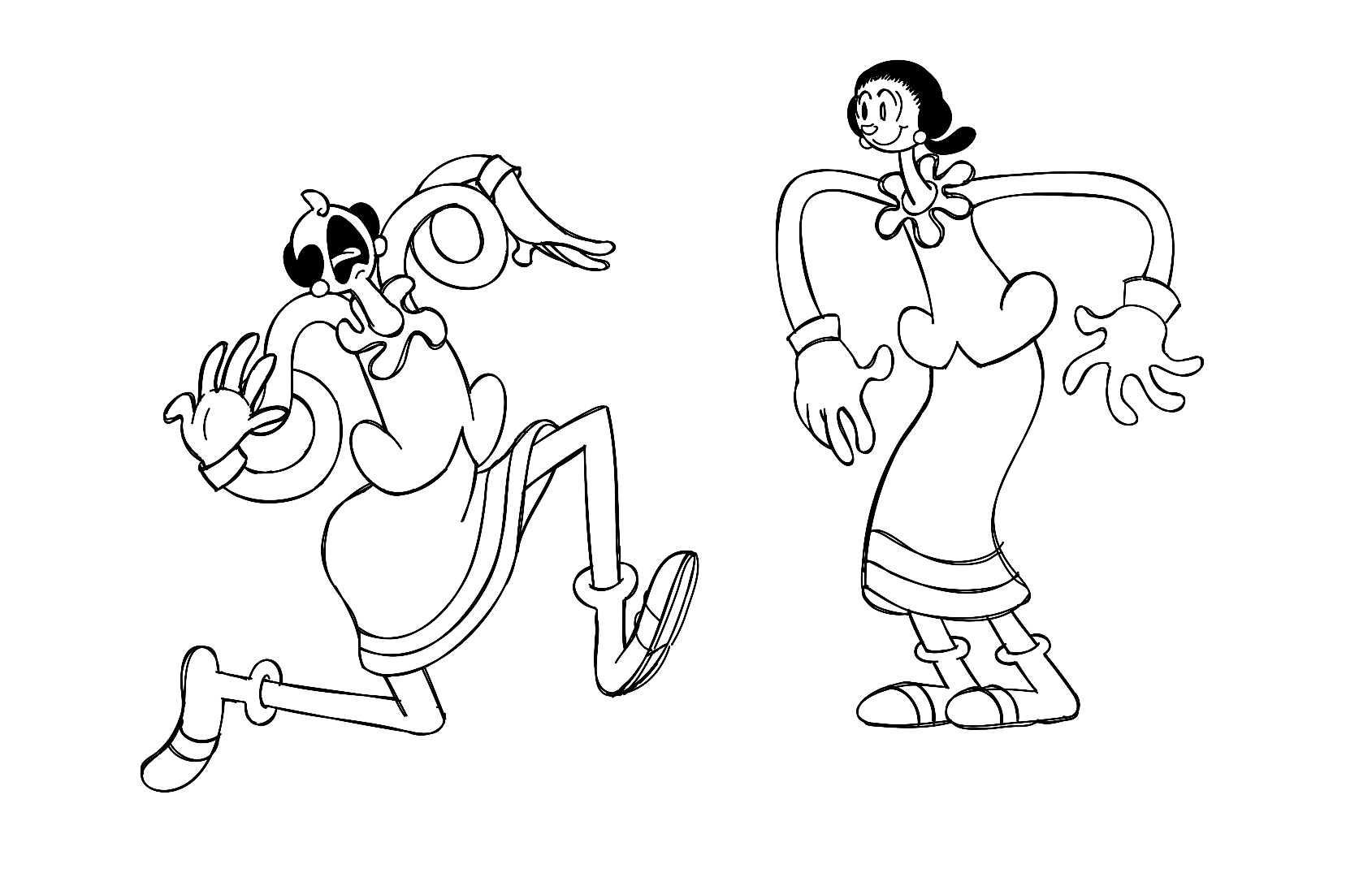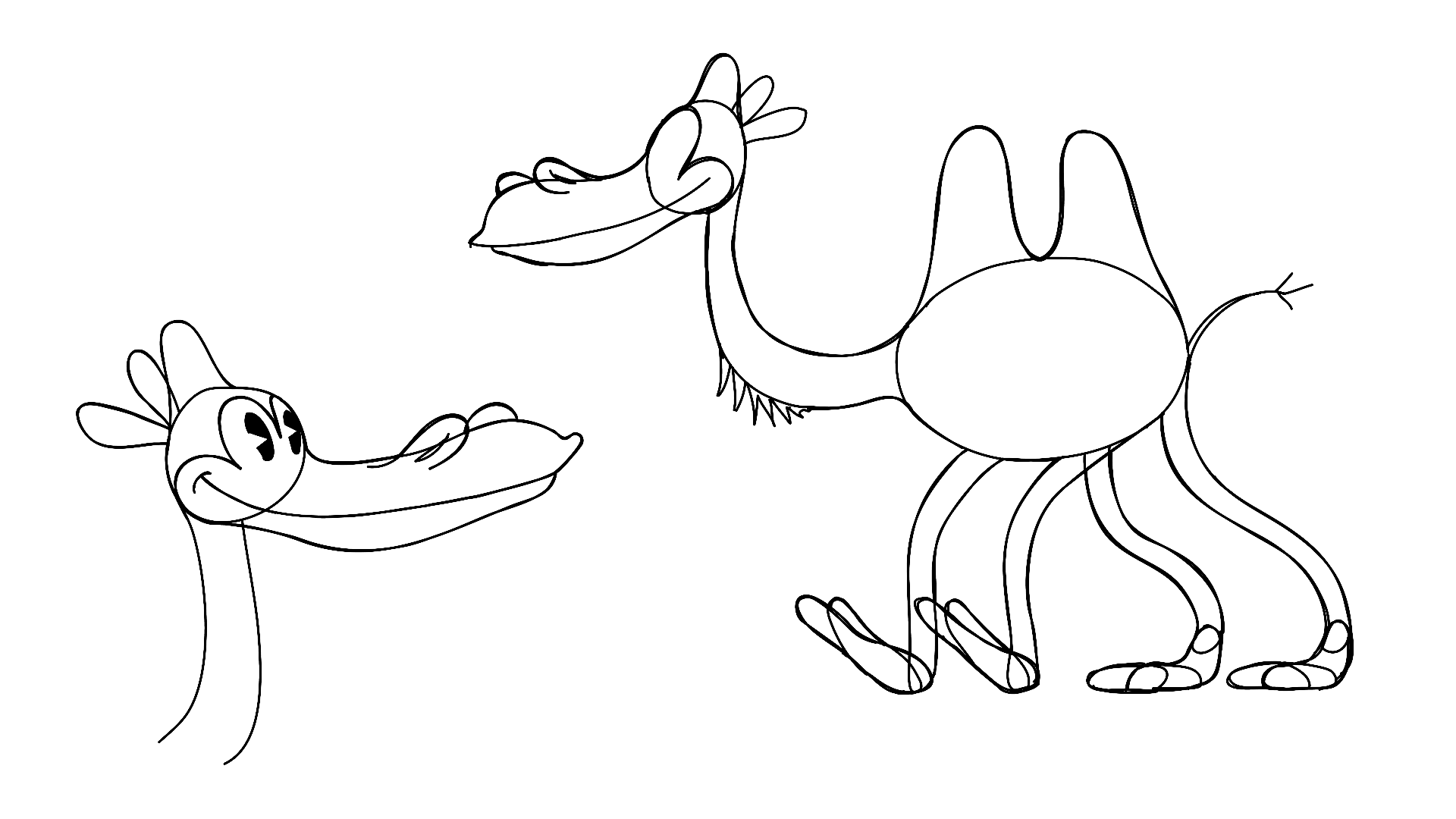Rubber hose animation, also known as inkblot animation, is a genre of animation that many will recognize as the textbook vintage cartoon style. These funky and energetic little numbers set the tone for a generation of artists to follow.
We have the masterminds behind the rubber hose style to thank for much of what we know and love about animation today. Let's take a closer look at what rubber hose animation is, and how you can achieve the same results for your cartoons.
What Is Rubber Hose Animation?
Rubber hose cartoons should not be confused with the work of those that came after, like the screwball-style cartoons from the minds of Chuck Jones and Tex Avery. Rubber hose animation did serve as a vital source of inspiration for them, however. It laid the bedrock foundation that they and others artists have been building off of ever since.
Some notable examples of rubber hose animation include Felix the Cat, Betty Boop, Popeye, and most of what Walt Disney was putting out before he went corporate.
Why Do Rubber Hose Cartoons Look So Crazy?

Much of what we love about rubber hose style animation emerged as a direct result of necessity, trial, and error.
As the first-ever career animators explored the medium, they needed to feel their way around the most common roadblocks impeding their work. They developed plenty of innovative ways of expressing themselves and the personalities of their characters along the way.
When talking about his design choices for Mickey Mouse, Walt Disney famously said:
Mickey had to be simple. We had to push out 700 feet of film every two weeks. His head was a circle with an oblong circle for a snout. The ears were also circles so they could be drawn the same, no matter how he turned his head. his body was like a pear, and he had a long tail. His legs were pipestems, and we stuck them in large shoes to give him the look of a kid wearing his father's shoes. We didn't want him to have mouse hands, because he was supposed to be more human. So we gave him gloves. Five fingers seemed like too much on such a little figure, so we took away one. There was just one less finger to animate. To provide a little detail, we gave him the two-button pants. There was no mouse hair, or any other frills that would slow down animation.
Rubber hose animation may look cutesy and childlike, but it really is an entire system that prioritizes efficiency and clarity above all else. The fact that the first inkblot cartoons were exhibited in black and white made this all the more important.
\Without the crutch of color, characters need to be visually distinctive. This ensured that the audience could differentiate each character through contrast alone.
They also needed to be simple enough to draw quickly. A solid blueprint of construction allowed animators to puppeteer them with reckless abandon, all while maintaining their form. Rubber hose animated characters are all built out of very basic shapes—ellipses, blocks, and their iconic rubber-hose style tubes.
The rubber hose style prevents characters from feeling stiff and lifeless by way of both the gags that they fall into and the visual appeal that they're famous for. Everything that these characters do emotes. The energy is exciting and contagious.
Hallmarks of the Rubber Hose Style
There are a few aesthetic themes that pervade nearly all examples of rubber hose animation, one of which is the frequent use of anthropomorphic animals as main characters. The design choices uniting each cartoon of this golden era are nearly universal.
Pie-eyed is a term used to describe the style of eyes in cartoons before the whites of the eyes were added. Pie-eyes consist of only a pupil, notched with one highlight per eye; this look earned its name because each eye looks like a pie with one slice eaten. Mickey Mouse used to be pie-eyed. If you've ever seen Tugboat Willie, you already know the difference.

As Mr. Disney mentioned previously, giving each character only four fingers (or even fewer, in some cases) was another time-saving shortcut. Inkblot cartoon characters will also usually be wearing white gloves, especially if they're animals. This convention is meant to highlight the most expressive parts of each character, as well as make them feel more human.

Finally, the rubber hoses themselves. They're useful as more than just limbs, however. The necks of characters (and oftentimes wacky props) also wiggle and undulate in this way, typically whenever an extra dose of silliness or comedy is needed.

The lack of any underlying bone structure makes these limbs the ultimate creative vehicle. They're able to communicate a number of emotions loud and clear. Uninhibited by anatomy or even the laws of physics, they're much easier to animate freely without losing out on appeal.
How to Animate Rubber Hose Cartoons
Honestly, so much of animating in this way comes down to the design of the character. Keeping things as simple as possible should be top-of-mind.
Once you've decided the "what" and the "who" of your starring role, you can break your idea down into rudimentary shapes. Choose shapes that are both easy to draw and easy to remember; give the character a body reflective of their personality.
Are they tough? Bold? Cunning and spunky? Once you've nailed it, documenting your design from all angles with the help of a model sheet will help you keep everything straight as you work.

With all of this being said, a word of warning: we do not recommend injecting your cartoon with unwarranted silliness arbitrarily. A good cartoon is so much more than something flashy and spontaneous. Without anything compelling for your characters to act out, the rubber hose style in our modern context can often feel contrived, which is the last thing that you want.
Instead, you should try to find these funny and interesting little moments naturally. Give your character a problem to deal with and follow them around as they try to figure it out. Every obstacle, blunder, and triumph is an opportunity for spectacle. If you're putting your heart into it, trust us when we say that the right time to draw something outlandish will be clear as day.
Rubber Hose Animation: Kicking It Old-School
If you're ready to dive in, the rubber hose cartoons of yesteryear will likely be one major source of divine inspiration. Mimicking the golden age of animation is a great place for a beginner to start. Once you've got plenty of practice in, however, we encourage you to take things a few steps further.
We've already seen everything that Mickey Mouse can do. What we haven't seen one speck of is what you've got to offer. Sharing your own vision with the world is one of the most rewarding parts of finding yourself as an artist. The rubber hose style makes doing that so easy.